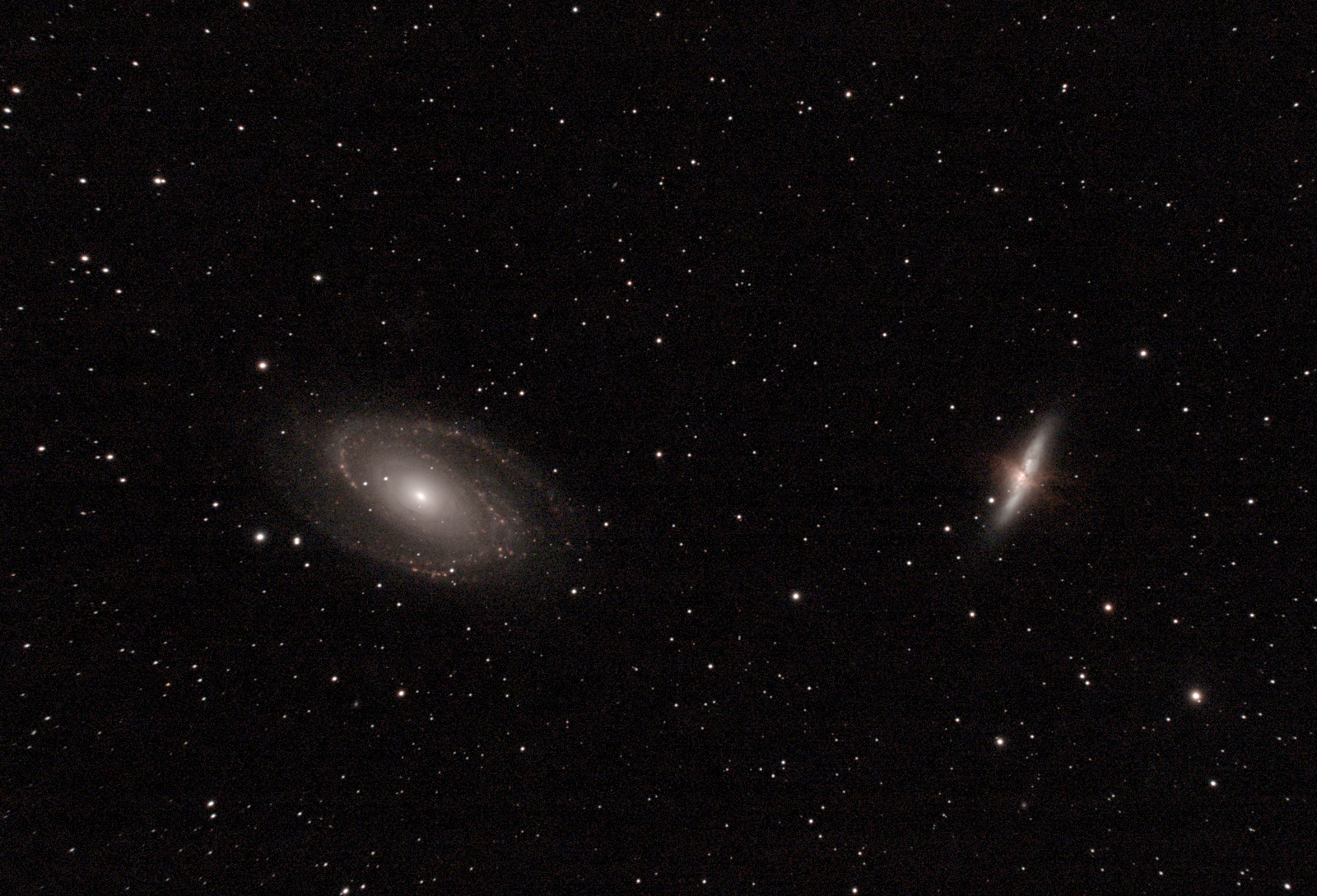
M81 is to my taste one of the most beautiful spiral galaxies. M82 is known as a “starburst galaxy”, because it is undergoing an intense period of star formation — a very interesting object.
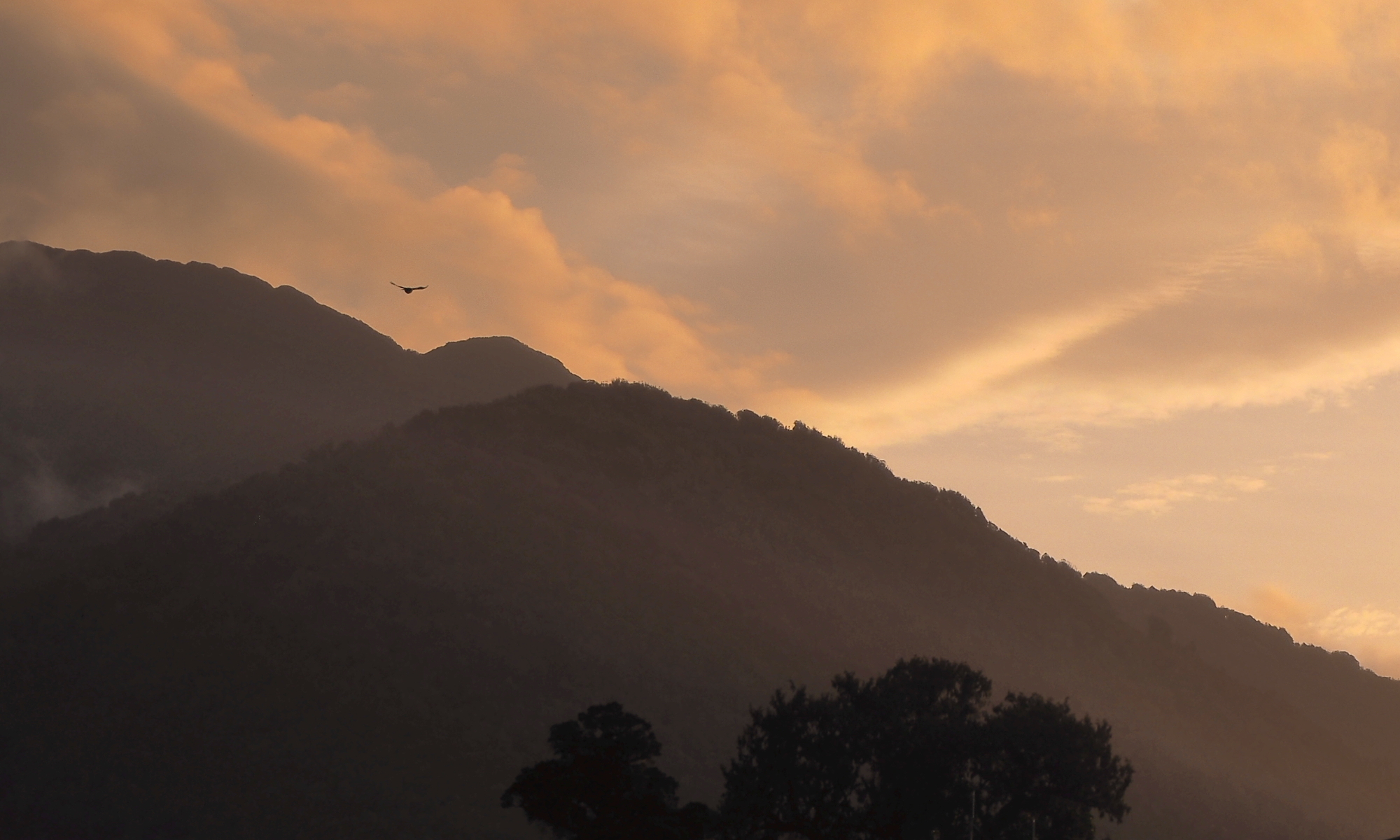

Remembering Earth-that-was

M81 is to my taste one of the most beautiful spiral galaxies. M82 is known as a “starburst galaxy”, because it is undergoing an intense period of star formation — a very interesting object.
In my early twenties I, a recovering Stanford graduate out in the real world with a worthless degree in psychology, worked as the assistant manager of a now-gone pizza parlor in south Palo Alto. It was in a bad location on San Antonio Road, with nothing around but light industry. We got noon business and night shift workers on their lunch break, not much else. Sometimes a biker group would roar into the big parking lot late at night and drink lots of beer.
This was the early 70’s. No cellphones, no laptops, no home computers, but we had one of the first video arcade games, Pong. Actually, we had two of them. Put in a quarter, and two people could play until one of them missed.
Management supplied employees with quarters marked with red fingernail polish that were recycled indefinitely. I think the rationale was for employee activity to attract customer interest, but mostly we played after hours. An informal hierarchy developed, and I had the distinction of being the best Pong player. I could rally indefinitely — if I concentrated, I never missed a return. Some might have disputed this claim.
The game went on until someone missed, and sometimes the contest became one of bladder pressure, or simple fatigue — we were playing after closing, after a full shift of slinging pizzas. When I say I was the best, it was on average over a long time. Sometimes I lost.
My closest competitor was a fellow refugee from the Stanford Group Mind, and a gentle soul. Even though it’s been 50 years, he is someone whose name I deeply regret forgetting. Maybe it will come to me.
We were both serious fans of Bob Dylan and Marvel Comics. For competition purposes he called me Dr. Strange — “Strange” for short. He called himself Shuma-Gorath. “Now, Strange, feel the might of Shuma-Gorath!” and the little blob of light would dart across the screen to a difficult corner…
This post is to celebrate my new skill, annotating an image.
Here’s M106 and a bunch of visually smaller galaxies:
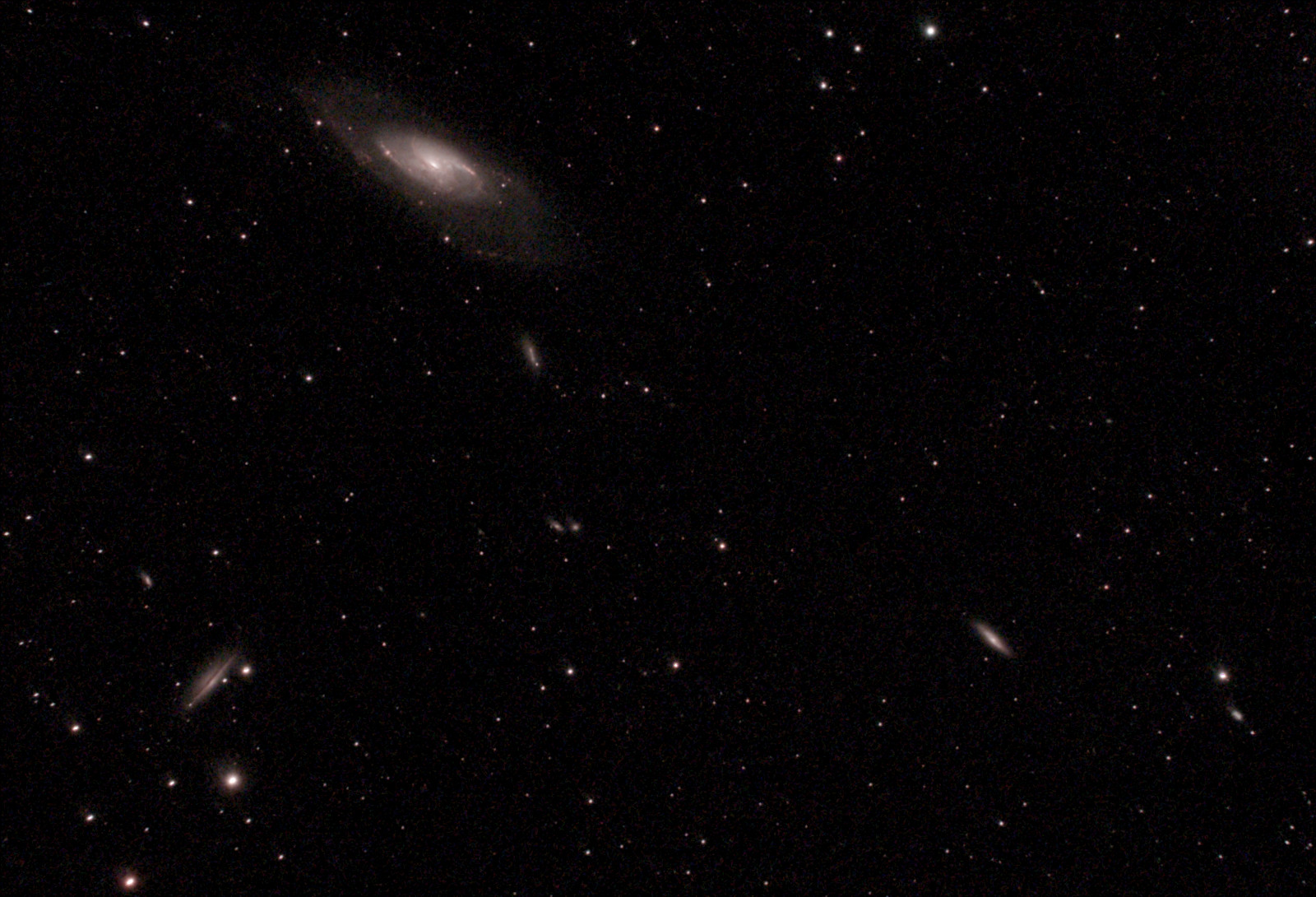
(I should mention that these images should be viewed on a larger screen.)
And, presto, here’s an annotated version showing the named galaxies:
This is SO nifty.
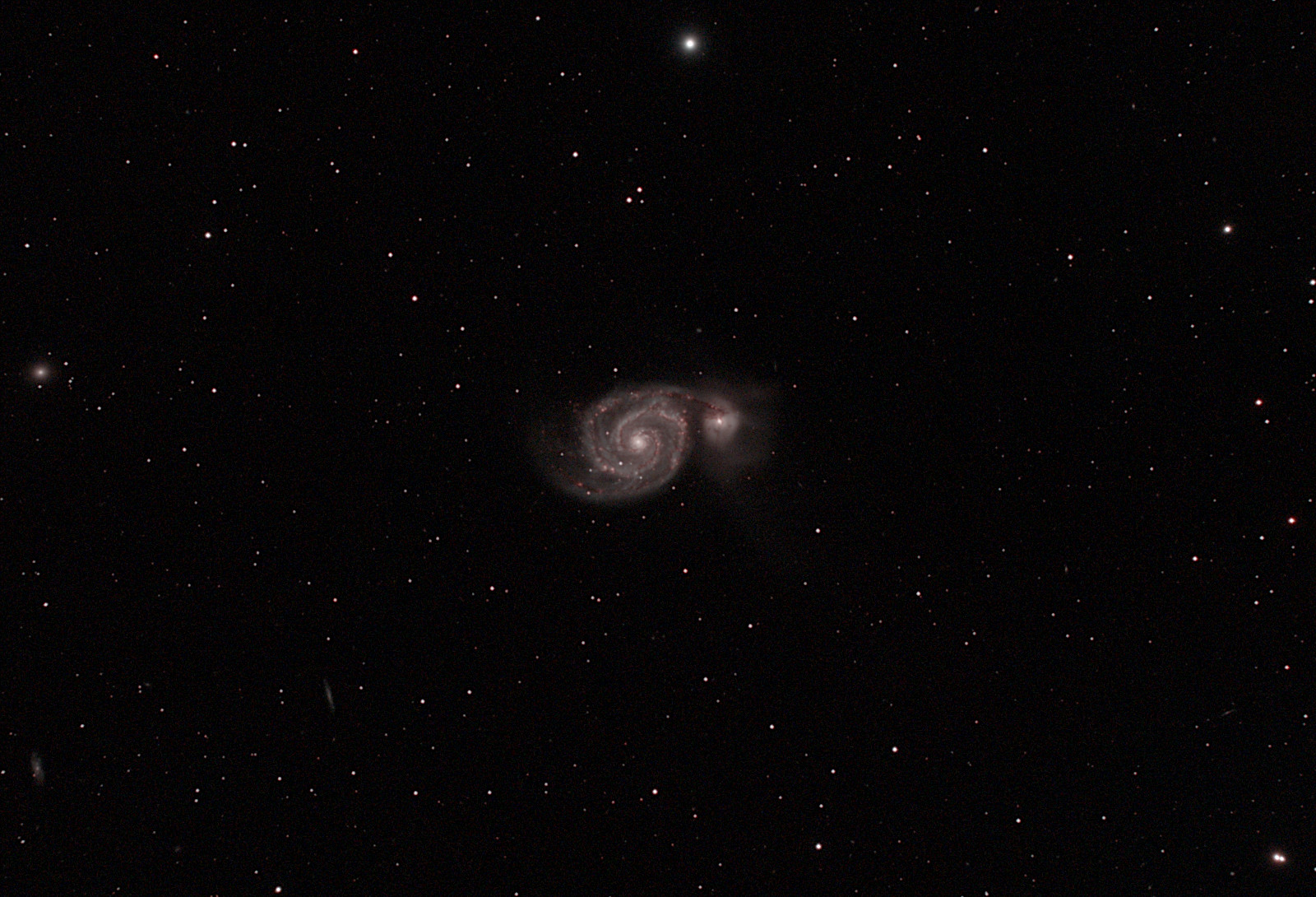
Almost at the left edge is NGC5198, an eliptical galaxy about 170 million light years away; the extreme bottom left corner has NGC5169. 160mly away. And the small needle along the left downward diagonal is IC4263 — 140mly away. There’s also a neat double star in the extreme lower right corner — HIP 65664 A & B.
The companion smudge of the Whirlpool has its own designation, NGC5194. If you maximally pixel-peep the area just above and to the right of NGC5194, the galaxy IC4277 is a barely discernible elongated smear:
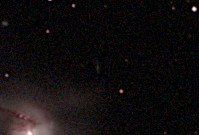
M51 is about 23 million light years away. As best as I can find, IC4277 is about 10 times as far — say 230 million light years.
About 6 hours total exposure time over three nights with a 115mm telescope. Processed with PixInsight and GIMP.
The radio said that “All of Us are Dead” (Korean zombie film) is number one on Netflix, though when I looked a moment ago it seems to only be number two. I finished watching it a few days ago.
Zombie films in general seem a tired genre, but this one has a twist: a very small percentage of the population are relatively immune to the zombie virus, and, though they are infected, they are able to keep their mental faculties intact. Even more, they become physically superhuman, with incredible strength, greatly enhanced sensory acuity, and enormous recuperative powers. This tiny population of superhumans, the “halfbies”, also remain infectious.
However, the disease is apparently only transmitted via mingled bodily fluids (ie, chomping on a victim), and so it is possible for the halfbies and humans to be friends, though a halfbie could be overtaken by hunger, decide to eat a human, and thus produce another outbreak. A halfbie is a potentially horrifying monster, but also possibly a terribly lonely friend. At the end we are left with a cliffhanger balancing that uncertainty. I look forward to season two.
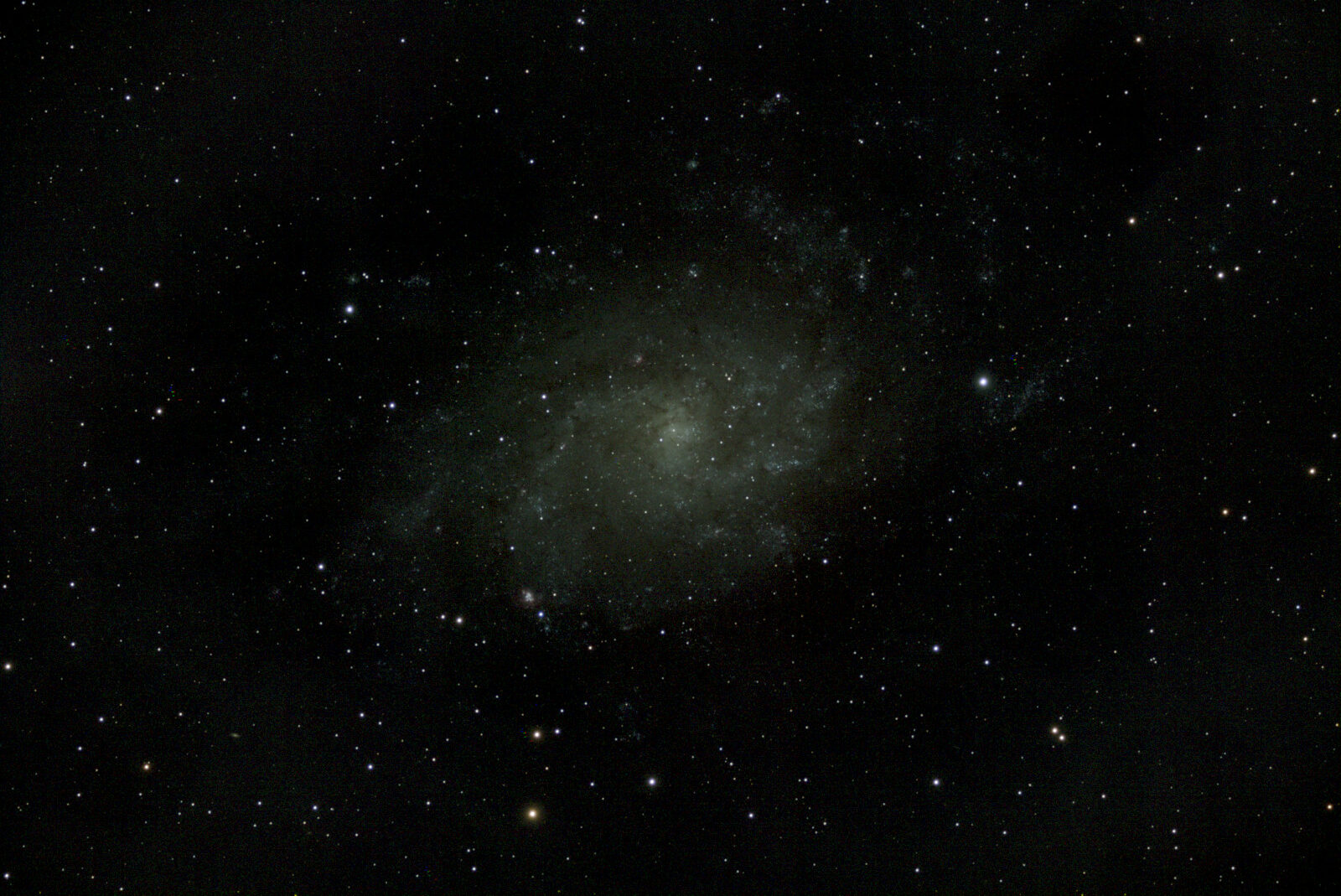
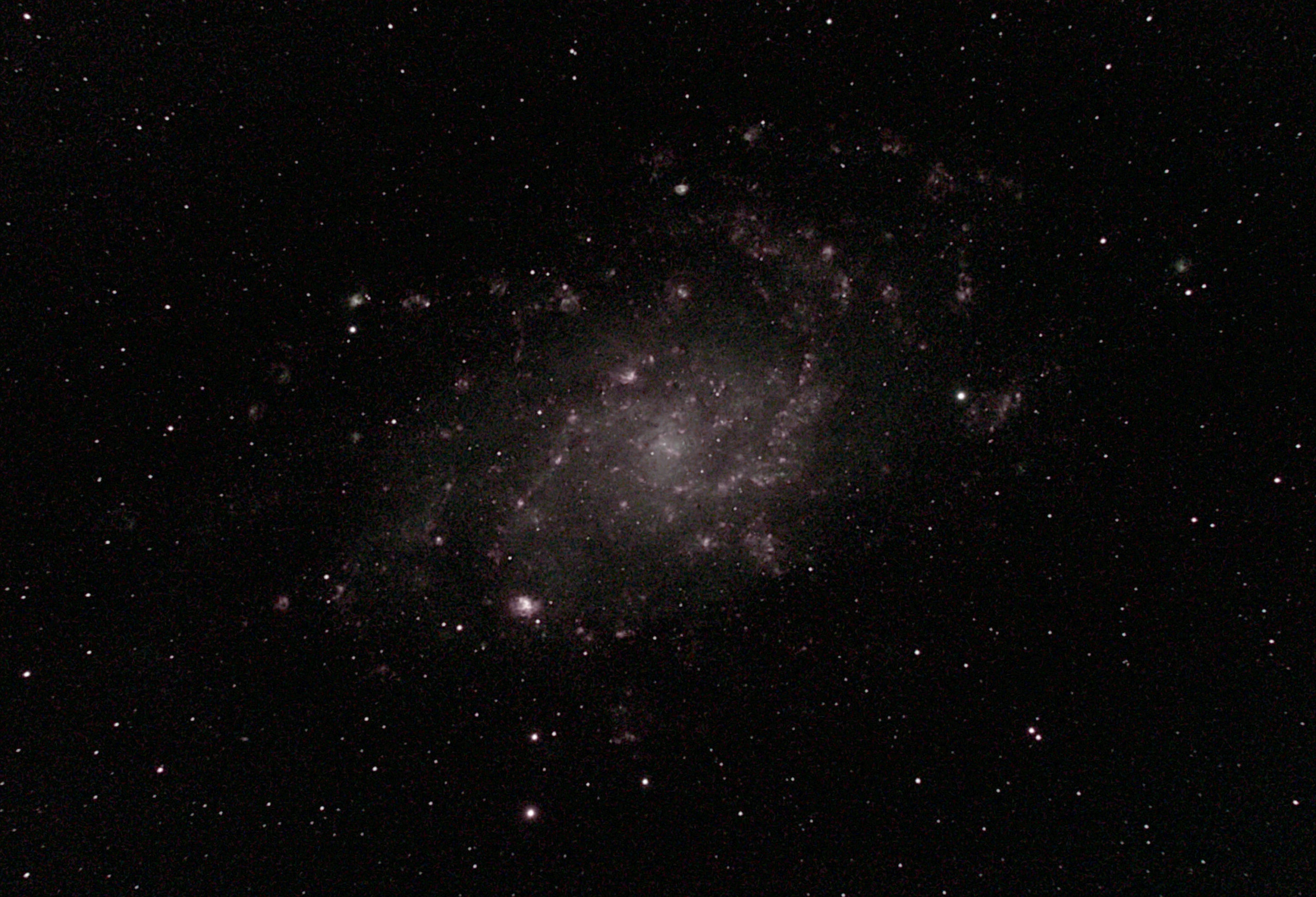
The sky here at Songbird Central suffers heavy pollution, both light pollution and chemical pollution. Astrophotography would be unsatisfying without filters to reduce the effects of that pollution.
I’ve forgotten exactly which filter it was I used with the first photo — I think the “Optolong L-eNhance”. A good general purpose filter. The image is dim, but if you look closely and carefully, there’s lots of sharp detail. A stack of 30 one minute exposures, for half an hour total.
The second photo was taken with the “Triad Ultra” filter, which emphasizes the light from nebulae, a stack of 13 three minute exposures and 17 five minute exposures — a little over two hours total. In this image the white light from the stars has been reduced, while the red light from the glowing gas areas is emphasized. The image is redder, overall, and there are many tiny reddish fuzzy blotches, which are nebulae within M33.
How does M33 really look? Photos are stories, not truth. If you were a lucky human with opportunity to look at M33 through a big enough telescope, you might see something like the first picture, but not the colors in the second. If you really got into it, you would recognize the overall shape of the galaxy, and you might even recognize details in the patterns of the stars.
[Edited to adjust the scale and other corrections.]
M101, the “Pinwheel Galaxy”. It has low surface brightness, and the sky at Songbird Observatory, San Francisco East Bay Hills, is almost always at least a little hazy, with an ever-present skyglow from the nearby cities. The results are always noisy –like an analog photos with lots of grain:
Further processing with PixInsight and Gimp lessens the obvious noise, but you also lose some of the delicate shading in the galaxy:
I can’t see this object (it seems so strange to use the word “object” to refer to an entire galaxy…) with my naked eye.
In fact, most nights I can’t make out more than a couple of constellations — if I didn’t use software to point the telescope, I would not be able to find M101.
How, then, do I even know this is M101 I photographed? I can compare it with the Hubble view.
Last night waves of wispy clouds kept flowing across the sky. I pointed the telescope at M1, the Crab Nebula, and took a 2 minute exposure. Not much, but more than I expected:
So I set the scope for 30 2-minute exposures, and went away to dinner.
But apparently after 5 crummy shots like the above, the sky cleared for a short window, and the remaining 25 were good. Unfortunately clouds returned, along with a heavy mist, so I covered the scope for the night.
Here is the sum of the 25 shots:
It looks more like a brain than a crab. Maybe a crab without legs? But turquoise and gold on black velvet, at least. If it’s clear tonight I’ll add more exposures.
The weather has been inclement and overcast for weeks now, with only a few clear nights. It’s been so long that I have had trouble getting my telescope set up. Here’s an image I call “The Skull”. Really the Rosette Nebula, but this view, to me, looks like a distorted skull gazing wistfully off and up to the right.
Many years ago I was on a rafting trip through the Grand Canyon. Floating through the Inner Gorge you can see Vishnu Schist worn by the water into beautiful fluted black walls. But I, in a grim mood, thought of that schist as the tortured souls of the damned, souls that had been sent back in time (God could do that, right?), buried miles deep and burned for eons by the molten interior of the Earth, crushed and twisted beyond all recognition and buried for millions of years until they were for a brief instant exposed to the sun and air and water, so I could see them as I floated by.
Anyway, the Skull Nebula.